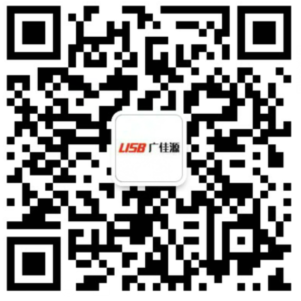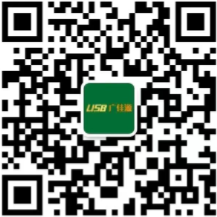 Mr. Chen:136-6225-2835
Mr. Chen:136-6225-2835
 Miss Chen:189-2385-0895
Miss Chen:189-2385-0895
Shenzhen Guangjiayuan Electronic Technology Co., Ltd
Mr. Chen: 136-6225-2835 (same WeChat account)
QQ: 979285705
Miss Chen: 189-2385-0895 (same WeChat account)
QQ: 2391552662
Chen Weiting :135-3824-4786 (same WeChat account)
Chen Weihao: 139-2459-4393 (same WeChat account)
Tel: 86-0755-33182327
Email: gjydz88@163.com
Website: www.usb-type.com
Address: Building 10, Hongxing Gebu Qixiang, Songgang Town, Bao'an District, Shenzhen, Guangdong Province
The arrival of the USB type C interface and USB 3.1 standard should provide consumers with more convenience. However, as of now, it seems that these new standards not only fail to provide consumers with a better user experience, but also bring many hidden dangers. Google engineer Benson Leung recently discovered that many USB-C data cables in the market do not fully comply with the latest USB specification standards.
So, let's clear up together and see what the standards for new technologies are. Firstly, we should clarify that although USB-C and USB 3.1 often appear together on some websites or product introductions, in reality, USB-C is not equivalent to USB 3.1.
USB 3.1 is an industry standard initiated by major companies such as Intel. The biggest feature of USB 3.1 is its extremely fast data transmission, theoretically reaching a speed of 10Gbps. USB type C is a specification for connectors, consisting of type C plugs and type C sockets.

In the latest USB 3.1 standard, there are three interface styles: Type-A (Standard A, the most common USB interface style on traditional computers), Type-B (Micro B, the interface style currently used by mainstream Android smartphones), and Type-C (the newly designed interface style mentioned above).
So we should be able to easily understand. Although USB type C is designed based on USB 3.1, this does not mean that devices using this connection method necessarily support the USB 3.1 standard; Contrary to our expectations, devices with older USB 3.0 Type-A interfaces are compatible with the USB 3.1 standard.
So why do some devices use USB type C interfaces that are not compatible with the USB 3.1 standard? What is the significance of doing this? That's right, just for convenience - because the USB-C interface, like Apple's Lightning interface, has no distinction between front and back, just plug it in directly, it's comfortable and enjoyable.
It is also worth mentioning that the updates of each generation of USB standards not only bring about faster data transmission speed, but also enhance scalability, accelerate current transmission speed, and other internal technology updates.
The initial USB standard did not have power supply capability, so the power supply of USB 1.0 and 2.0 was only 2.5w (0.5A/5v). Although this is enough to power small electronic devices such as mobile phones, it is obviously not enough for devices such as Portable storage device. And even when it comes to charging mobile phones, 2.5W doesn't seem so abundant right now. And USB 3.0 emerged as a result, with a power supply of up to 4.5w (0.9a/5v). The USB type C 1.1 specification also comes with its own power supply operation mode, under which the USB type C interface can be used for fast charging.
As part of the power supply standard, the new power management system introduces the power supply level required for the adoption of a new bidirectional data channel. This is to ensure compatibility with traditional devices and reduce equipment damage caused by non compliant data cables.
We can take a look at the comparison chart of USB basic specifications:

The main difference between USB 3.0 and 3.1 is that 3.1 supports peak data transfer rates up to twice that of 3.0. Most devices may jump to 3.1 directly, and the task of developers is to ensure that their devices can support the two latest standards and ensure the downward compatibility of their devices.
However, when it comes to transmission rate, we must look at it as a whole, because like the barrel law, any failure to meet the standard will directly affect the final rate. For example, plugging a USB 3.1 device into a USB 2.0 interface will limit the transmission Rate limiting to 480 Mbps. In practical applications, hardware can also severely restrict your transmission rate, such as the hard drive itself.
So we can simply understand it as: USB-C refers to a bidirectional connection type, while version numbers like "3.1" refer to data transmission speed and other specifications, such as interface or data cable specifications. However, neither of these strictly defines USB power supply specifications or peak current specifications, and the compatibility of devices or data cables is not emphasized.
So, this has created many potential hazards, and this uncertain expression is very dangerous. Part of the reason for this is that these people are attempting to promote new technologies while formulating standards that are compatible with old devices. I hope this table can help manufacturers gain a detailed understanding of different versions of power supply standards and produce products that meet industry standards. And this is not only responsible for its products, but also for the users.

How to distinguish between good and bad data cables? If you continue to read this article patiently, we can start discussing some things related to these standards that are relevant to our lives. Let's expose the point about data cables and connectors.
For devices that use USB for power supply, the current is achieved through the CC pin of the connector, which is detailed in the new 2.0 standard. This type of current exchange between the charger and the device can provide up to 100W of power, with a maximum current of 5A/20V in the most extreme cases. This mode is most likely to be used by laptops or other more power consuming devices, as it can support higher voltage modes.

So here comes the key point. In the connector, signal exchange between microcontrollers can provide the correct voltage and current settings as needed, and if there is no signal exchange between these microcontrollers, it means that these high-power modes cannot be activated, but can still match all low-power modes. This means that if used only at lower power, such as as as a data cable for devices such as smartphones, these additional technical costs can be eliminated.

For basic USB-C versions 1.0 and 1.1, 5V devices can provide up to 3A of current without the need for USB PDs. Compared to them, the current and voltage through the CC pin have been increased to 5V, and this value will be continuously monitored after power is started to confirm that the current meets the required output power of the device. The current is controlled by the pull-up resistor Rp, through which the current can be set to a specific value, such as 0.9A, 1.5A or 3A.
For USB-C to USB-C connections, because the ports are all built to the same standard, these higher current modes can be withstood, which is what we often refer to as the fast charging function. However, recently there have been many issues related to traditional adapter data cables, and the main reason for these problems is that these people plug new phones or laptops equipped with USB type C interfaces into a Type-A PC port or charger.
We are not worried about the charging speed caused by this, but about the current transmission power between devices. Due to the clear provision of the USB Type C standard that can provide high power current transmission but cannot be compatible with old Type-B or other standard connectors at high power, data cable manufacturers should actually use CC connectors and Rp resistors to ensure that devices do not attempt to obtain high power supply from old chargers or devices that the adapter itself cannot withstand.
The following specification table shows which values can be used to set a specific Type-C charging mode. In the small text below, we can see that a 56k Ω resistor should be able to be connected to all traditional data cables. And this is the default specification for limiting USB power or USB battery charging when old devices are connected to current transmission (in cases where the data cable can support fast charging).

How to choose the correct data cable? I hope everyone can have an understanding of USB type C and USB 3.1 by now.

USB 3.1 provides very fast data transfer speed, but in reality, its speed advantage can only be truly realized when the connected data cable and devices at both ends of the data cable meet the 3.1 standard. Please remember that although they must all comply with the 3.1 standard, this does not mean that they must all support USB type C connectors.
The core reason for this problem is that there is currently no simple method to determine whether there is a resistor in the data cable that consumers want to purchase, and whether the resistor setting is correct.
However, we can confirm that using only the data cable provided with the purchase of the device or directly purchased from the manufacturer of the device is the safest approach, but please remember that the data cable of the device may not be compatible with other devices.

Unfortunately, most sold data cables do not have detailed parameter descriptions for reference, which is highly likely to be misleading. However, we can try to find relevant descriptions of USB-IF certification on the manufacturer's official product page or packaging. USB-IF is a non-profit organization that specializes in testing data cables for compliance with standards. Although not every manufacturer will seek their certification, this certification standard can serve as a benchmark for the safety and reliability of data cables.
Contact person:
Mr. Chen 136-6225-2835 (same WeChat account)
Miss Chen 189-2385-0895 (same WeChat account)
Chen Weiting 135-3824-4786 (same WeChat account)
Chen Weihao 139-2459-4393 (same WeChat account)
Address:
Building 10, Hongxing Gebu Qixiang, Songgang Town, Bao'an District, Shenzhen, Guangdong Province
 |
 |
| Technology 1 | Technology 2 |